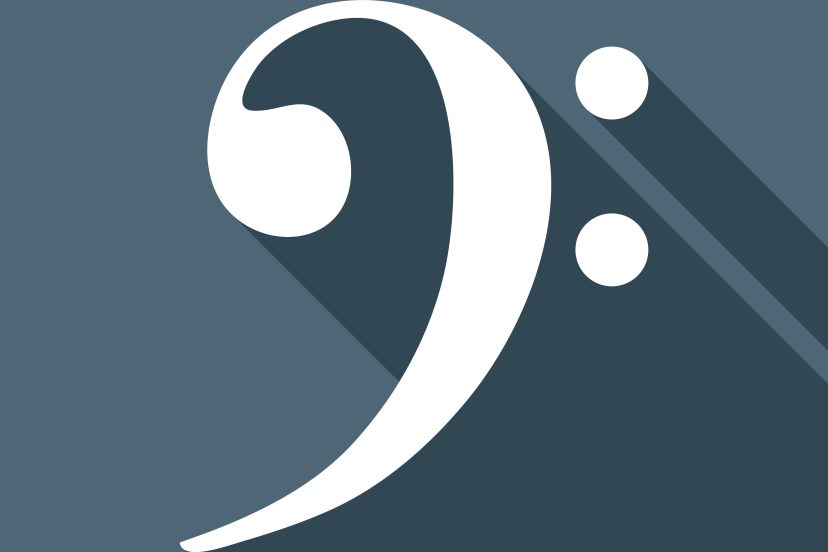Bass Clef Mnemonics for Bass Guitarists
What Are Bass Clef Mnemonics?
I remeber just starting to learn music theory and sheet music and wondering, “How can I memorize these notes easily?” Well, this is where bass clef mnemonics come to into olay. Mnemonics are simple memory aids that can help you associate each note with a fun phrase or pattern. By using Bass Clef Mnemonics for Bass Guitarists, you’ll be able to quickly and easily recall the notes on the bass clef, making you a better, more confident bass player.
Understanding the Bass Clef
What is Bass Clef Mnemonics for Bass Guitarists?
The bass clef, also known as the F clef, is a musical symbol placed on the staff to indicate lower-pitched notes. For bass guitarists, it’s like a guide that helps you navigate the deeper tones of your instrument. In contrast to the treble clef, which is used for higher-pitched instruments, the bass clef is a staple for bassists and other low-register players.
Why Bassists Need the Bass Clef
As a bass guitarist, the bass clef is your roadmap. It’s the foundation of reading music for your instrument, and learning it can help you translate written music into your playing. Even though many bass players rely on tablature, knowing how to read the bass clef adds an extra layer of understanding to your musical journey.
Bass Clef vs. Treble Clef for Bass Guitarists
While the treble clef is important for other instruments like guitar, flute, or piano, the bass clef specifically focuses on the lower notes that are key to playing the bass guitar. But don’t worry—mastering Bass Clef Mnemonics for Bass Guitarists will make reading sheet music easier for you in the long run.
The Lines and Spaces of the Bass Clef
Notes on the Bass Clef Lines
The bass clef consists of five lines, each representing a different note. From the bottom line to the top, the notes are G, B, D, F, and A.
Mnemonics for the Lines (Good Boys Do Fine Always)
Here’s where mnemonics come in handy. To remember the order of the notes on the lines, you can use the phrase “Good Boys Do Fine Always.” Each word corresponds to a note:
- Good (G)
- Boys (B)
- Do (D)
- Fine (F)
- Always (A)
Notes in the Bass Clef Spaces
Between these lines, you have four spaces, which represent the notes A, C, E, and G.
Mnemonics for the Spaces (All Cows Eat Grass)
To easily recall the notes in the spaces, you can use another mnemonic: “All Cows Eat Grass.” Just like with the lines, each word corresponds to a note:
- All (A)
- Cows (C)
- Eat (E)
- Grass (G)
Why Mnemonics Help Bass Guitarists
The Power of Mnemonics for Learning
Mnemonics are more than just cute phrases—they’re powerful learning tools that can help you memorize complex information quickly. As bassists, we’re often balancing technical skills with musical theory, so mnemonics can simplify the process of learning the bass clef.
Memorization Tools for Beginners
If you’re a beginner, mnemonics can be your best friend. Rather than struggling to remember notes by rote memorization, mnemonics give you a quick and easy way to remember the order of notes. Plus, they’re fun and engaging!
Applying Mnemonics to Bass Guitar Playing
Connecting Notes to the Fretboard
One of the biggest challenges for new bass players is connecting what they see on the bass clef to their fretboard. Here’s a tip: practice visualizing where each note corresponds to a fret. For example, the G on the bass clef’s bottom line is the same G as the open G string on your bass.
Visualizing the Notes on the Neck
Once you start seeing the notes from the bass clef in relation to your fretboard, everything begins to click. It’s like having a map that tells you exactly where to put your fingers. The more you practice this, the easier it becomes to transition from reading the bass clef to playing those notes fluidly on your instrument.
Bass Clef Sight Reading for Bassists
Learning to sight-read on the bass can seem intimidating at first, but mnemonics help break it down. Start by slowly reading simple lines of music, focusing on the notes and spaces, and gradually build up speed. Mnemonics act like training wheels—they’ll guide you until reading the bass clef becomes second nature.

Advanced Mnemonics Techniques for Bass Guitarists
Combining Mnemonics with Scales and Patterns
As you grow more comfortable with mnemonics, you can start applying them to more advanced techniques like scales and patterns. For instance, when playing scales in different keys, the mnemonics can still serve as a helpful guide for locating the root notes and other key positions on your bass.
Moving Beyond Basic Mnemonics
Once you have a firm grasp on the basics, you’ll find that you no longer need mnemonics as often. However, they can still be useful for more complex pieces or when reading unfamiliar music. Think of mnemonics as a foundational tool that supports your playing as you progress.
Tips for Practicing Bass Clef Mnemonics
Daily Practice with Bass Clef Mnemonics
Practice makes perfect. Dedicate just 10-15 minutes a day to reviewing your mnemonics and applying them to sight-reading exercises. The more you practice, the faster you’ll internalize the bass clef notes.
Bass Clef Flashcards and Apps
In today’s digital age, there are tons of apps and flashcards that can help you drill bass clef mnemonics. Whether you’re waiting for the bus or taking a break, these tools make practicing fun and accessible.
Conclusion
Mastering the bass clef is an essential skill for any serious bass guitarist. While it might seem challenging at first, using mnemonics like “Good Boys Do Fine Always” and “All Cows Eat Grass” makes the process much easier. These memory tools will not only help you read sheet music but also improve your overall understanding of your instrument. So, take the time to practice your mnemonics, and soon, reading the bass clef will feel like second nature!
FAQs
- Why are mnemonics important for bass players?
Mnemonics make it easier to memorize the notes on the bass clef, helping bass players read music faster. - How do I apply mnemonics to playing the bass guitar?
Start by practicing sight-reading with mnemonics, then connect each note to its corresponding fret on your bass. - Can advanced bass players still use mnemonics?
Yes! Even advanced players use mnemonics for tricky pieces or when learning new music. - What are some good apps for practicing bass clef mnemonics?
There are many apps like Tenuto or Musictheory.net that offer flashcards and exercises for bass clef practice. - How long does it take to master bass clef mnemonics?
With regular practice, you can start seeing improvements in just a few weeks, though complete mastery might take a few months.




